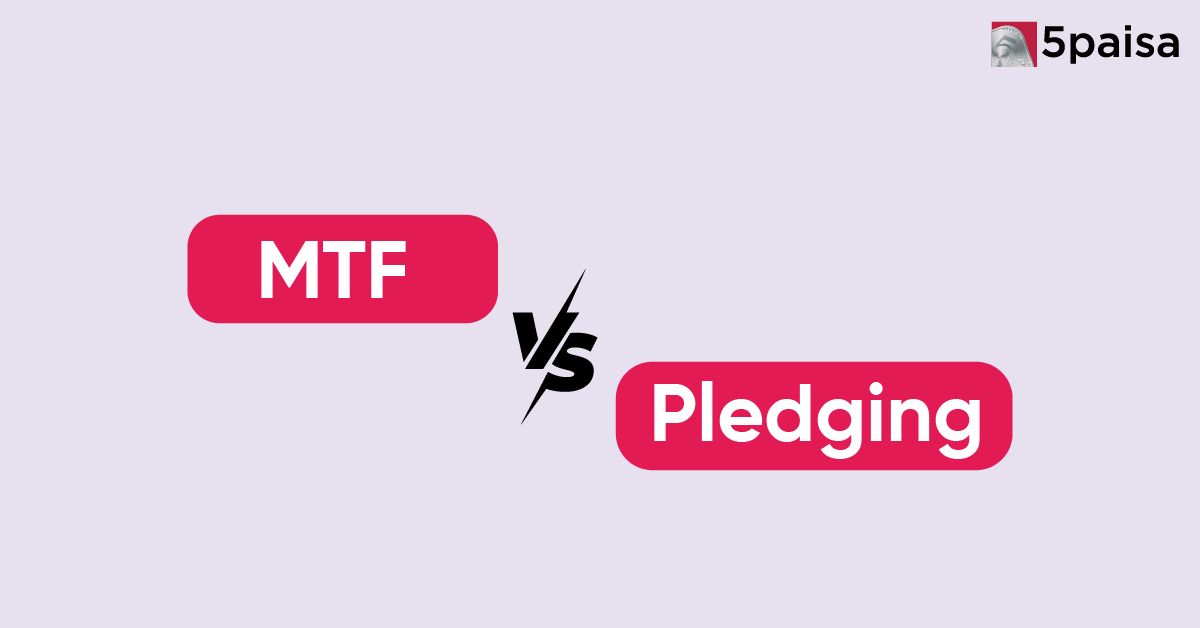MTF vs Pledging: Which Strategy Gives You More Power in the Market?
Four Asset Allocation Strategies to Create Wealth Through your Investments

The primary aim of every investor is to accumulate wealth or to achieve their long-term goals without the need for loans. Asset allocation is dividing one’s investment portfolio into categories of debt, equity, stocks, bullion, real estate, and other financial investments. Having a correct mix of these investments, which is in accordance with the risk appetite and financial goal of the individual, will help in wealth accumulation. Put simply, asset allocation balances the risks involved with every asset class.
However, certain factors should determine your asset allocation strategy:
- Goal: It is imperative for investors to decide their need for investing and the range of the investment (short-term or long-term) before they start investing.
- Risk appetite: Risk appetite refers to how much an individual is willing to stake in order to earn substantial returns. For example, investors who are risk-averse predominantly invest in securities with guaranteed profits. On the other hand, risk-tolerant investors choose securities that come with high risk with an aim to earn higher returns.
- Period: The duration for which an investor will stay invested is the time horizon of the investment. Primarily, the investor’s goal determines the period of the investment and also the risk tolerance.
It is important to figure out the above points before you begin your investing journey.
Here are four commonly used asset allocation strategies to create wealth.
Strategic Asset Allocation
This is a traditional method where the target allocation of investments depends on the investor’s preference of risk tolerance, time horizon, investment objective, and other conditions. Strategic asset allocation changes its holding as per the investor’s preferences. It aims to provide an optimal balance between risk and return for long-term investments. Strategic asset allocation is based on the modern portfolio theory, which recommends diversification to lessen risk and increase portfolio returns.
In the case there is a deviation from the investment goals, the portfolio is brought back to its original allocation.
Tactical Asset Allocation
Tactical asset allocation is also based on the modern portfolio theory and is a moderately active strategy. It is an alternative for investors who think that the strategic asset allocation model is too rigid in the long run. This strategy aids investors in making tactical deviations from their investments to profit from any unique or unexceptional opportunities present in the market. It adds timing to the portfolio and allows the investor to benefit from economic conditions favorable to an asset. However, when investors gain short-term profits, the asset portfolio is brought back to its original allocation.
Dynamic Asset Allocation
Dynamic asset allocation is an active strategy which continuously allocates asset classes as per the prevalent market and economic conditions. Through this strategy, investors sell weakening asset classes and purchase assets that are increasing in value. Dynamic asset allocations allow investors to benefit from the best-performing investments, thereby ensuring exposure to market momentum and substantial returns if the trend rises upward. Equally, it will also lower the portfolio’s exposure to those classes that are trending lower to minimize losses.
Diversification is the key feature of this model as it exposes the portfolio to many asset classes and reduces risk. The portfolio may consist of equity, mutual funds, index funds, currencies, and other investments.
Insured Asset Allocation
This type of asset allocation sets a limit under which the base portfolio value should not decrease. If the investors can garner returns above the threshold, they can undertake active trading based on analytical research, market forecasts, and expert views on various asset classes to increase value. In the case the value drops, the investor should invest in risk-free assets to bring back the threshold. At such times, most portfolio managers overhaul their allocation or might altogether change the investment strategy. Insured asset allocation is suitable for risk-averse investors who want active trading with a guarantee of a safety net.
Asset allocation involves both active and passive trading techniques for investors to realize their financial goals. Nevertheless, it differs for every investor, and the investor has to continually change their strategies according to the market and economic conditions to achieve their financial goals.
- Flat ₹20 Brokerage
- Next-gen Trading
- Advanced Charting
- Actionable Ideas
Trending on 5paisa
03
 5paisa Capital Ltd
5paisa Capital Ltd
Indian Stock Market Related Articles
Disclaimer: Investment in securities market are subject to market risks, read all the related documents carefully before investing. For detailed disclaimer please Click here.





